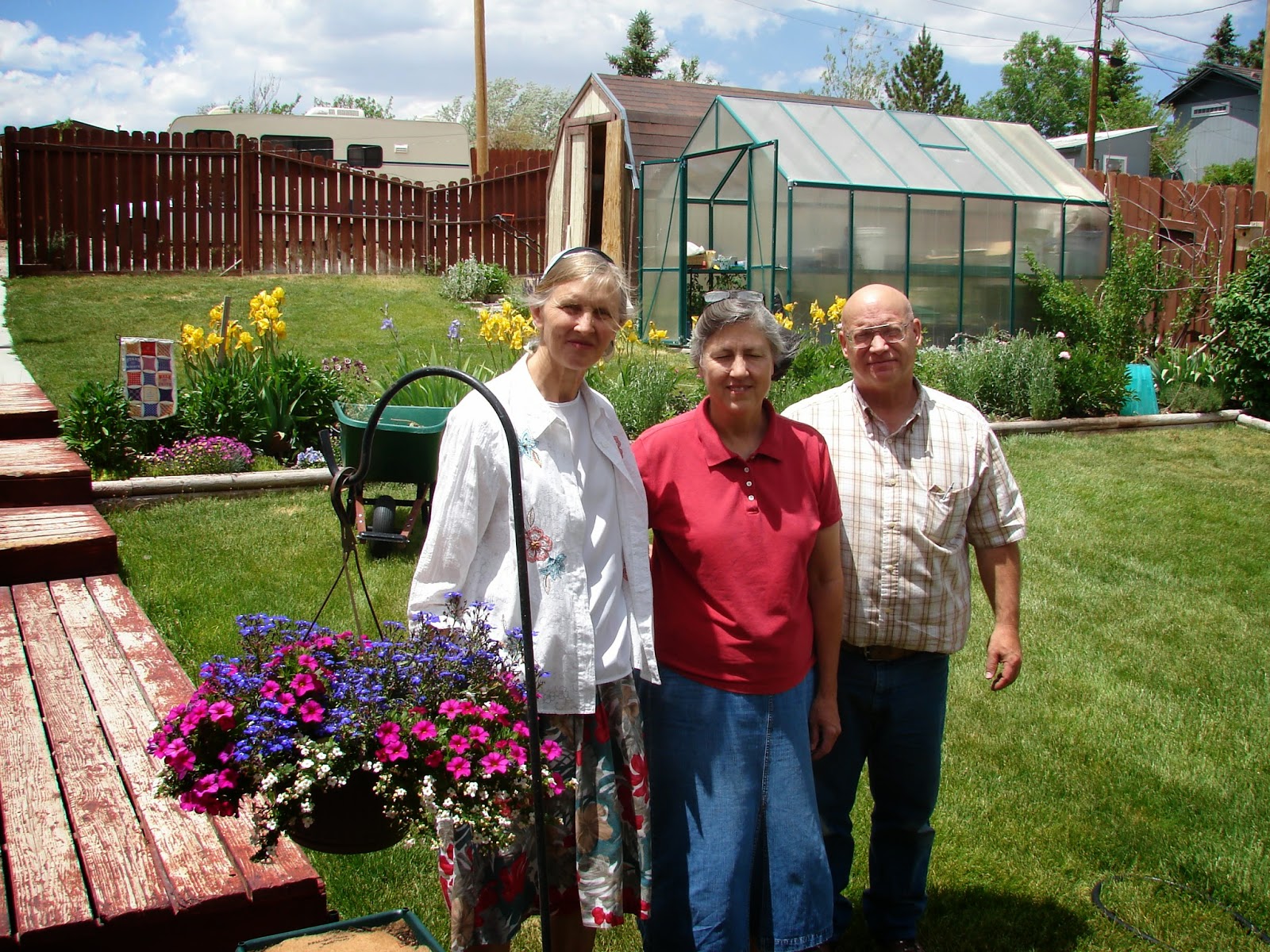This was our first stop near Cary, NC to visit Christine's sister Darlene and Charles Saunders. We went to church with them on Sunday and Charles and I spent much of the afternoon flushing out the plumbing in the coach and trouble shooting the electrical system. He found a defective breaker switch which throws juice to the interior receptacles after the generator is started and a leak in the on board water tank. We ordered a new breaker and had it sent to another of Christine's sisters whom we plan to visit in Harrison, AR. We were thinking of not bothering to carry water in the water tank anyway as that would add weight and cost some gas mileage.
We did a BBB checkup on the guy in Arkansas who was going to repair our refrigerator, and found out that he has a bad reputation, so we canceled plans to go there. That will save us some significant time and miles and about $800. We decided that we can buy an awful lot of ice to keep our stuff cold for that money. We have an extra ice cooler which sits just inside the entrance door and it is fairly easy to catch the melt water from the ice and use it for hand and dish washing. We carry a few gallons more for drinking water. It's not working bad at all.
We camped two nights in the Smokey Mountains and I got in some serious hiking (about seven miles) from the camp ground to the Appalachian trail. Christine was coming down with a urinary tract infection and was not up to that much hiking.
We spent a full day in Nashville, TN visiting Servant Group International and finding a walk in clinic to get a consultation and antibiotics for Christine. We were treated to brunch at Cracker Barrel by Bud Driver and he generously gifted us a converter box which plugs into the cigarette lighter on the dashboard and permits us to recharge our computer stuff as we drive. The following day we headed across Tennessee for the Missouri Ozarks.
We had a great two nights and a full day camping at the farm of Baker Creek Heirloom Seeds and attending their spring gardening and country music festival near Mansfield MO. There were lots of plants and crafts vendors and a very interesting replica pioneer village with things like a blacksmith shop, grist mill, jailhouse, apothecary, livery stable, country store, etc. One of the highlights for me was listening to some excellent local old time country music performers. I even got to play my dulcimer on stage with one of the groups. We were both quite impressed with the performance of one 88 year old gentleman playing percussive wooden paddles in rhythm with one of the groups. My how he could make his arms and hands fly! As we passed through Mansfield we stopped briefly at the home of Laura Ingalls Wilder, author of the
Little House on the Prairie series, but didn't tour the museum. We did visit a historical society museum in Mansfield though.
We spent two full days visiting Christine's other sister Sara, husband Robert Kane, and daughter Winel in the Arkansas Ozarks. The breaker switch for the generator had arrived so I installed it and got the electrical system for the coach checked out and fully functional. Christine was still not feeling well (partly side effects from the medicine) and spent the second day with Sara, washing clothes, and working on some computer stuff while I hiked eight to ten miles on back roads in the Ozarks. I got to chat with several local folks and to pet some dogs.
Our next stop was the Tall Grass Prairie Preserve in the Flint Hills west of Emporia, KS. This is one of the only places in the west where one can walk around in the midst of native prairie vegetation with few fences and be able to see several miles in all directions of undisturbed prairie ecosystem. The over 10,000 acres of preserve surrounds an old ranch which was first developed around 1880. The ranch house, barn, and outbuildings themselves were built of the native limestone and flinty stone and were quite interesting to see from the outside. Unfortunately the insides of the house and barn were closed to inside tours due to ongoing restoration. They were surrounded by miles of stone fences. Imagine a privy with three holes and foot thick stone walls! One of the bigger disappointments was the prairie grass was not that tall. Over winter weathering and prescribed burning (prairie fires were part of the original land management) had reduced the vegetation down to six inches to two feet in height. If we had visited in the fall we would have found 5 - 6 foot tall grass. Christine and I hiked a loop of several miles out into the preserve. The views were awesome!
The Flint Hills covers an area equivalent to several counties in size where there are few houses (only scattered towns) and primarily large areas grazed by cattle which are brought in from out side the area to graze during the summer. The rolling hills are rocky and not suitable for tillage agriculture but are good for cattle ranching. So the entire countryside for miles around looks much like it did in the days of the old West

































